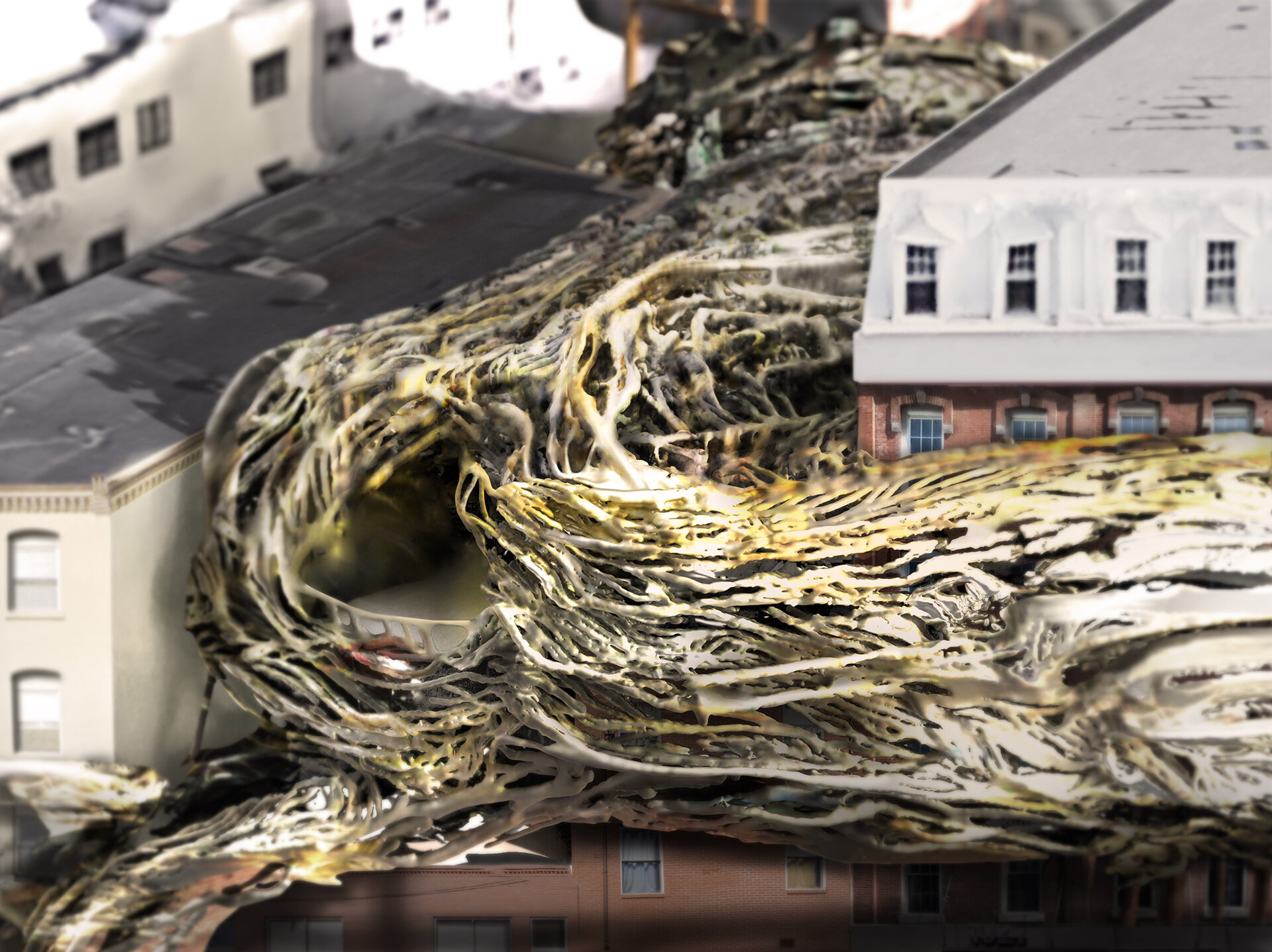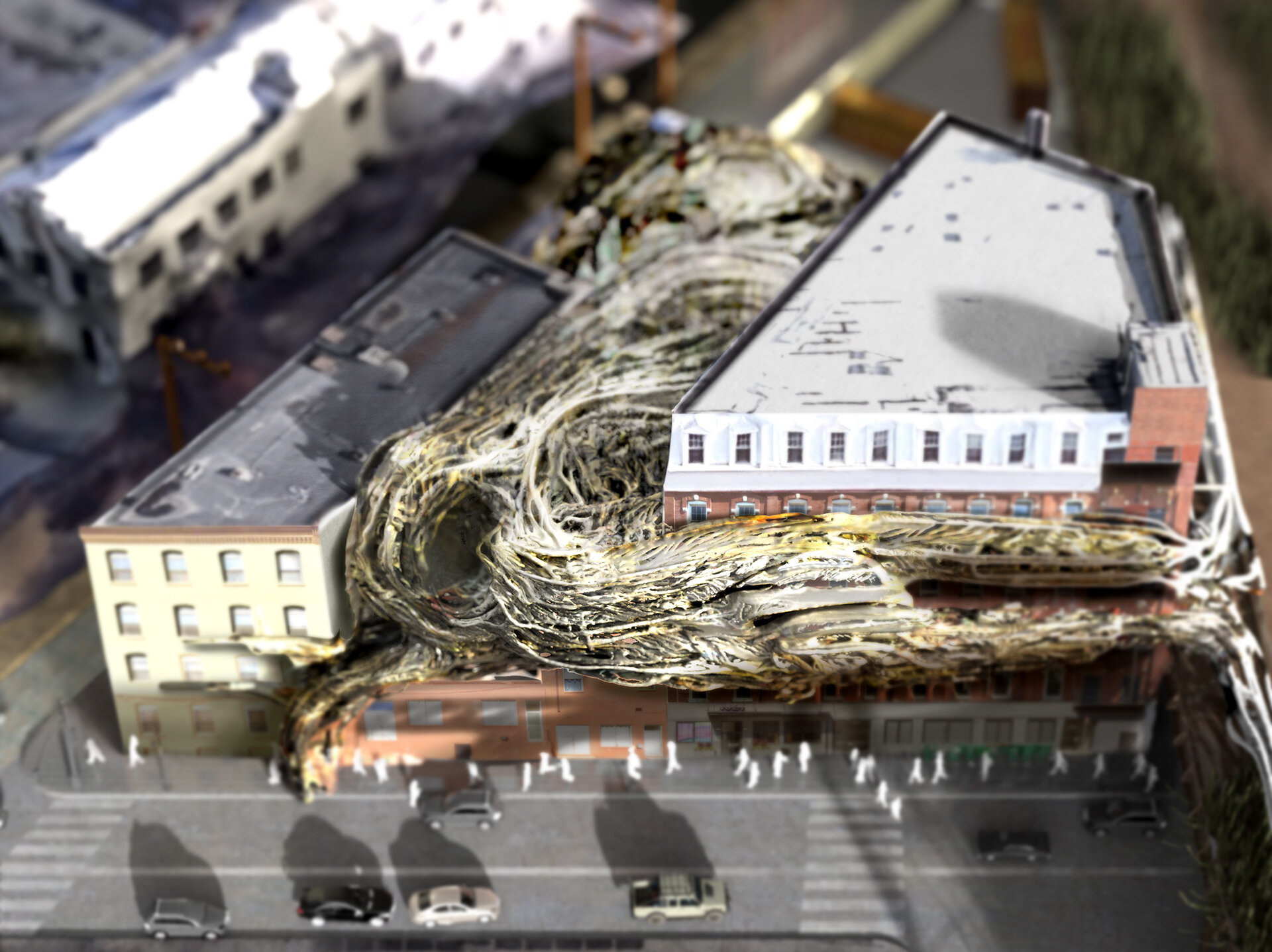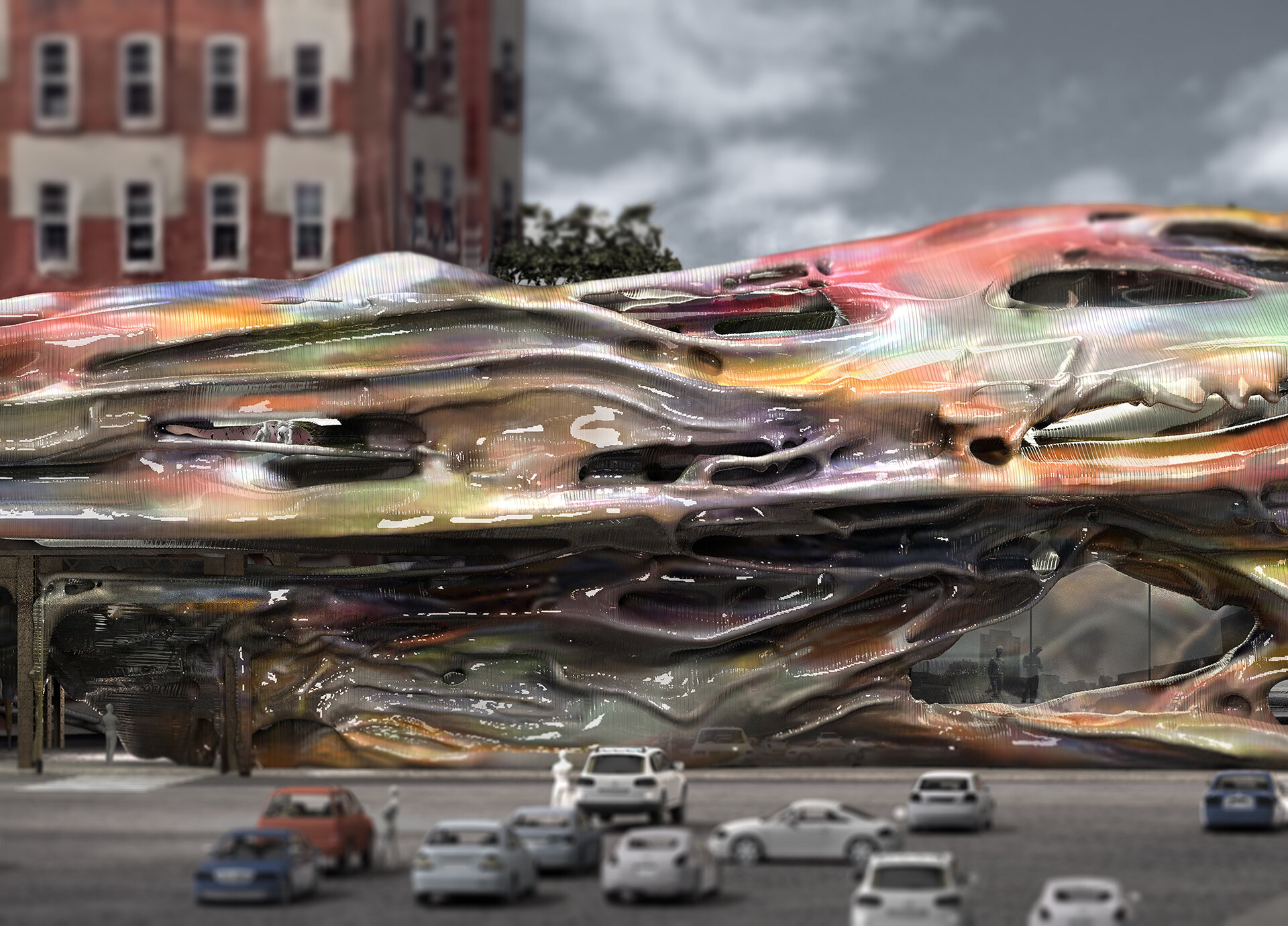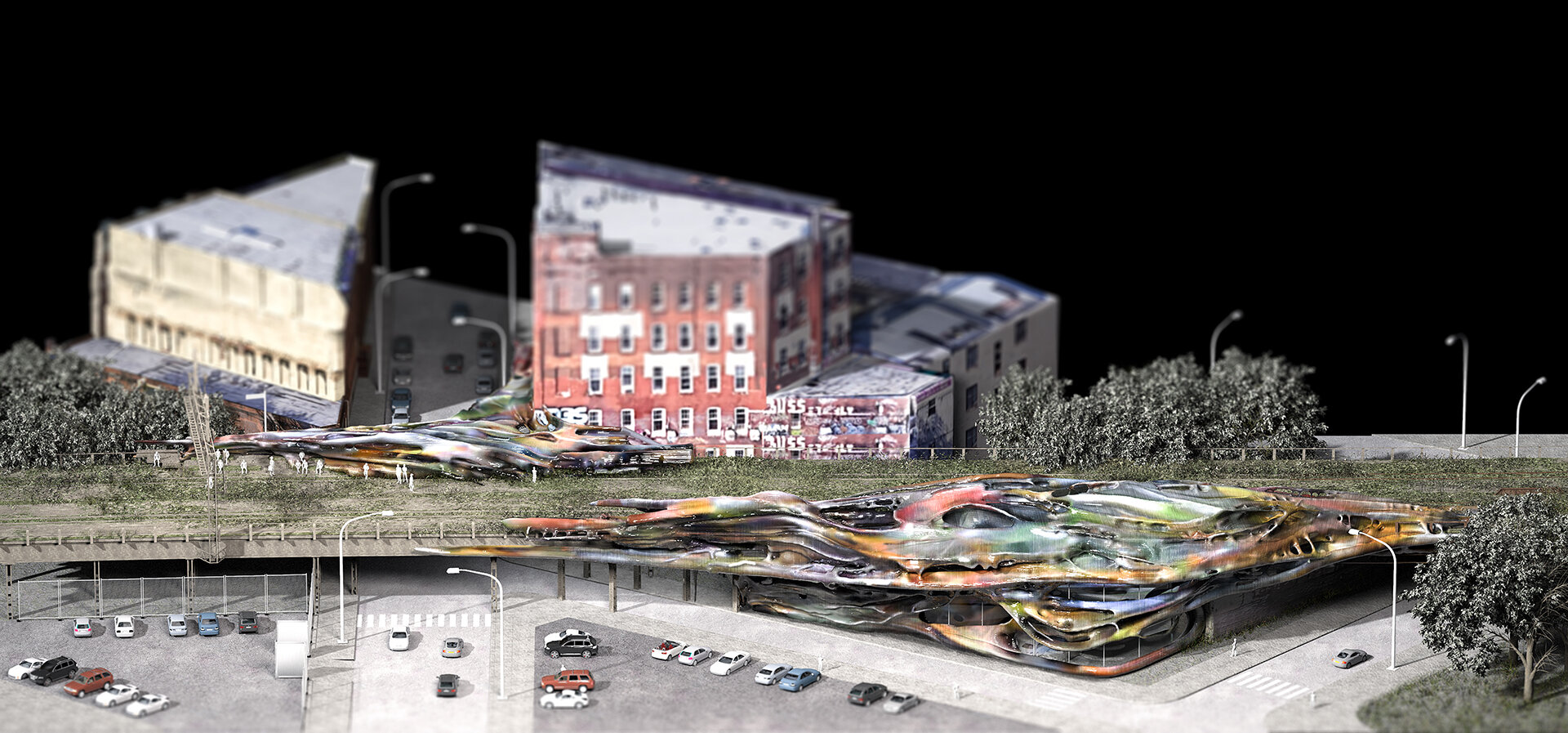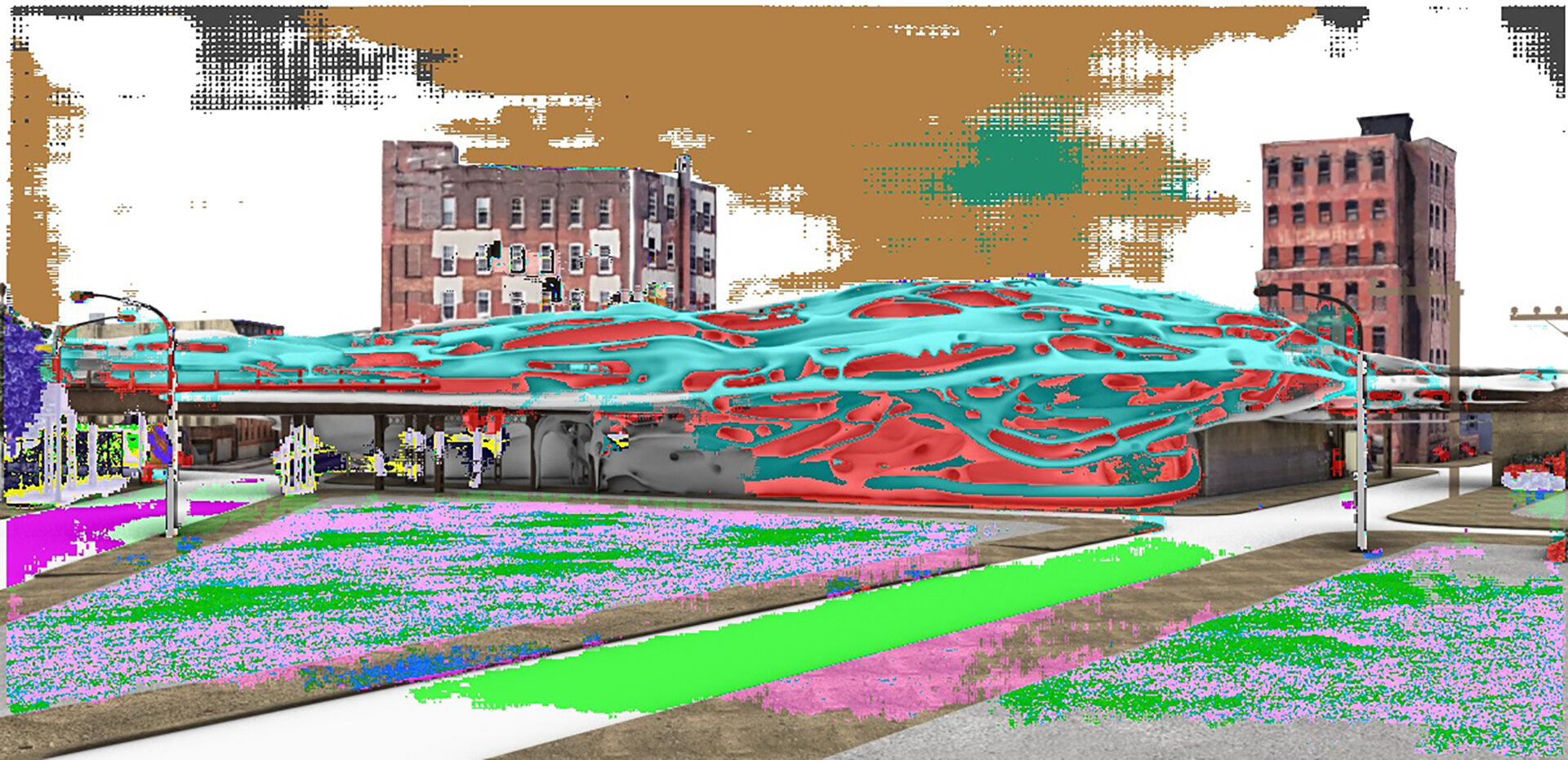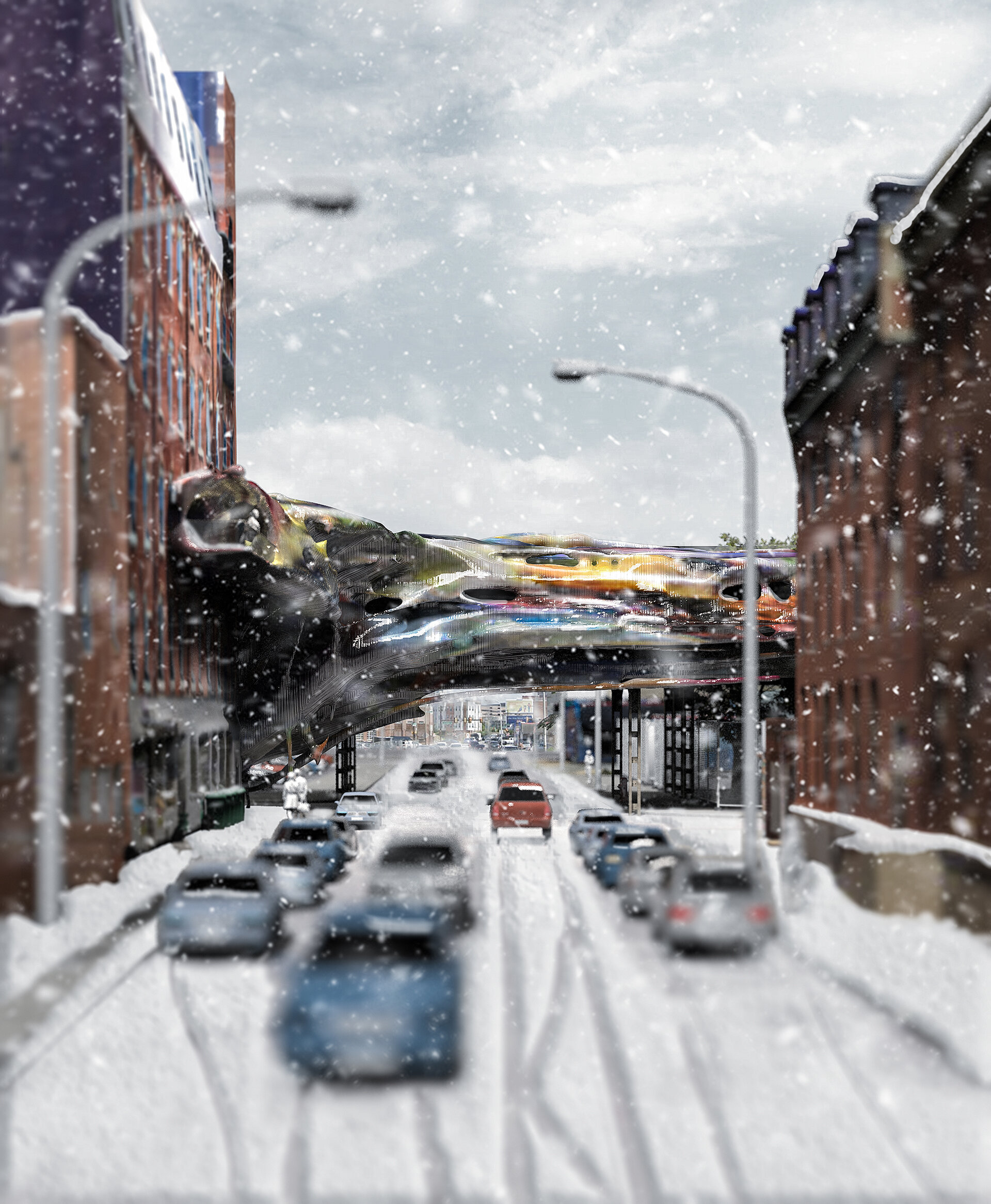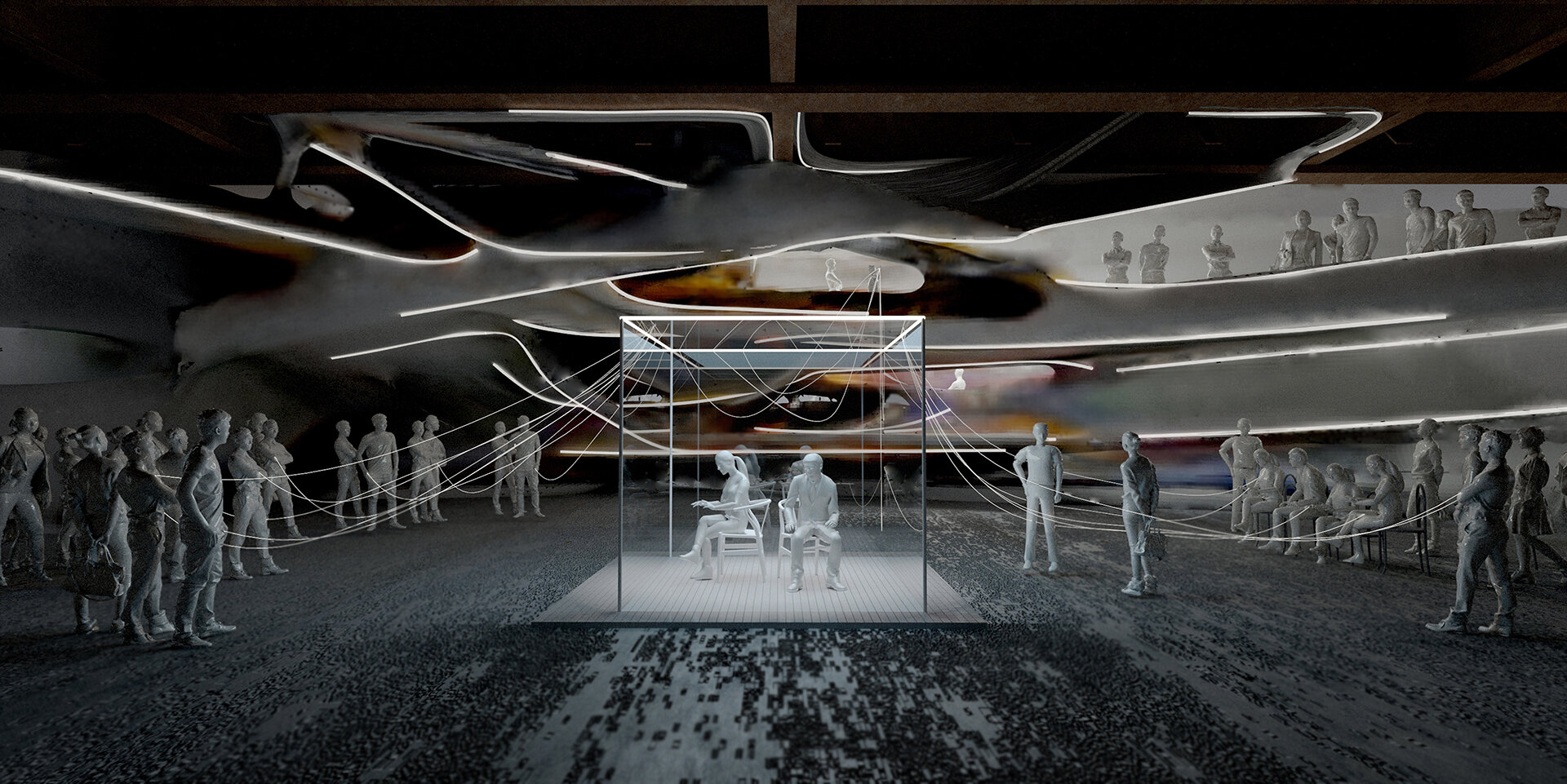Penn M.Arch 701 Studio Robert Stuart-Smith: Final Review December 2020
TA: Patrick Danahy
Machinic-inSites
Studio Robert Stuart-Smith
TA: Patrick Danahy
Students: Ximing Du, Chuanqi Gao , Sijie Gao, Huajie Ma, Heyi Song, Wenli Sui, Saina Xiang, Jing Yuan, Mingyang Yuan, Haochun Zeng, Yuhao Zhang, Zhe Zhong
We are no longer cognizant of the nature of today’s built environment or the technologies that enable it. Urban Operating Systems (Urban OS) such as living-PlanIT™ manage city logistics in real-time; monitoring traffic and initiate trash collection on-demand, while high-frequency trading in the global financial market is being relayed off non-descript rooftops, unaware to passers-by below. The built environment is a complex, chaotic system, that emerges from the interplay of a multitude of agencies, that are perceived, surveyed and managed by machine vision and machine learning technologies, of which we have little knowledge or oversight of. Machinic-inSites explores high-frequency building – a temporary occupancy of the built environment that can be rapidly developed through computer vision and machine learning technologies and implemented by additive manufacturing on-demand. Operating as a bespoke tailored infill, proposals speculate on community-led entrepreneurialism, challenging established design and development practices through novel forms of autonomous agency and aesthetic affect.
